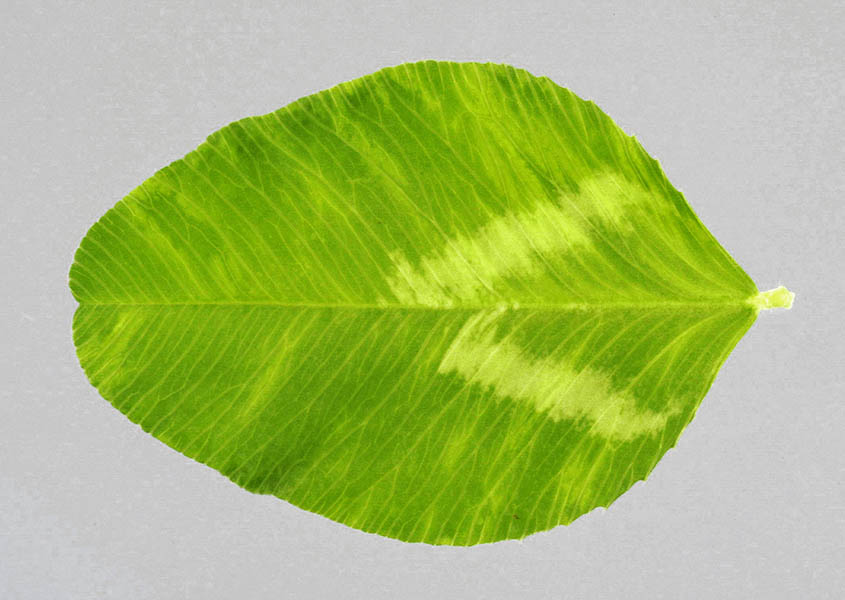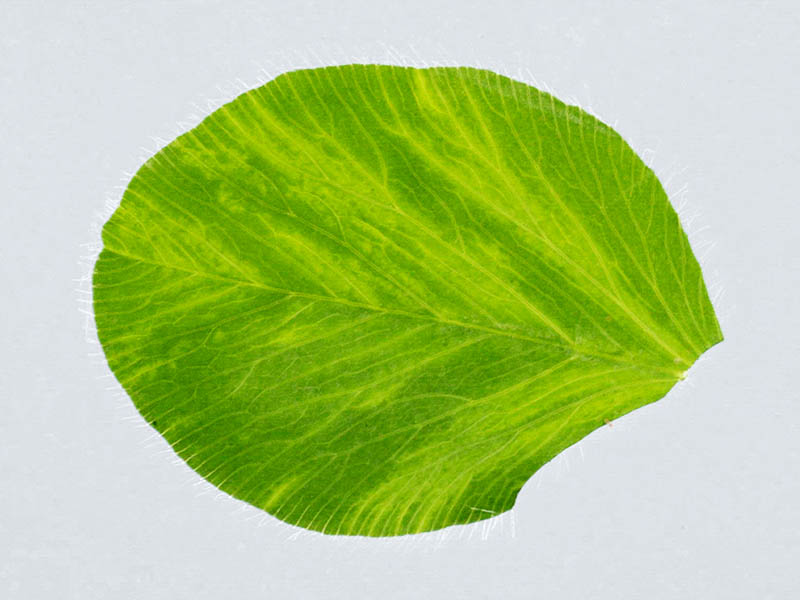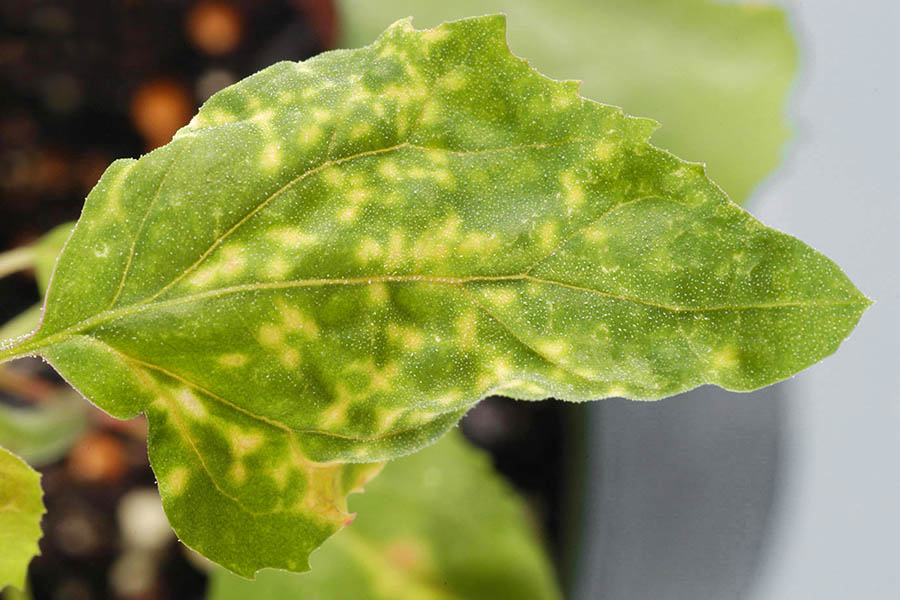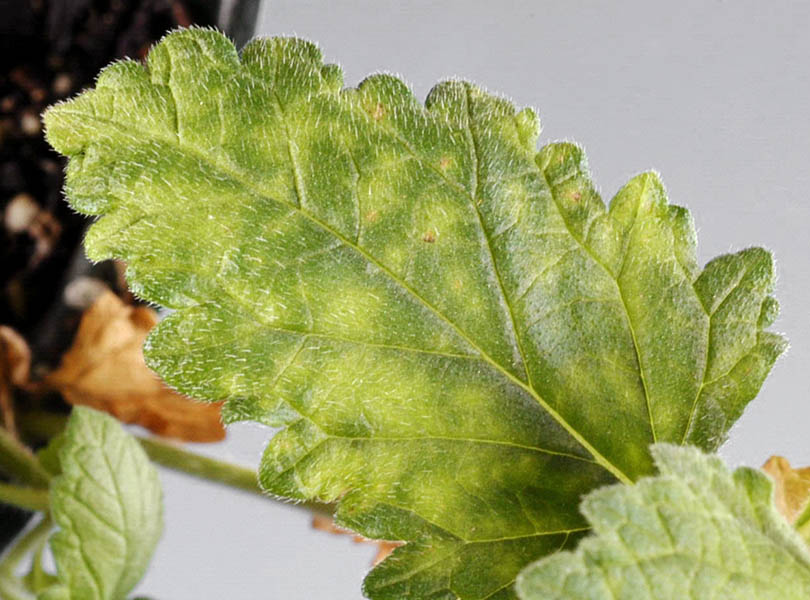Clover yellow mosaic virus
Identity
- Preferred Scientific Name
- Clover yellow mosaic virus
- Other Scientific Names
- clover yellow mosaic potexvirus
- Pea mottle virus
- EPPO code
- CLYMV0
Pictures

Symptoms
Clover yellow mosaic virus; symptoms on clover. Laboratory image. USA.
©Jeffrey W. Lotz/Florida Department of Agriculture & Consumer Services/Bugwood - CC BY 3.0 US

Symptoms
Clover yellow mosaic virus; symptoms on clover. Laboratory image. USA.
©Jeffrey W. Lotz/Florida Department of Agriculture & Consumer Services/Bugwood - CC BY 3.0 US

Symptoms
Clover yellow mosaic virus; symptoms. Laboratory image. USA.
©Jeffrey W. Lotz/Florida Department of Agriculture & Consumer Services/Bugwood - CC BY 3.0 US

Symptoms
Clover yellow mosaic virus; symptoms. Laboratory image. USA.
©Jeffrey W. Lotz/Florida Department of Agriculture & Consumer Services/Bugwood - CC BY 3.0 US
Distribution
Host Plants and Other Plants Affected
| Host | Host status | References |
|---|---|---|
| Chenopodium album (fat hen) | Main | |
| Malus domestica (apple) | Main | |
| Malus sylvestris (crab-apple tree) | Main | |
| Medicago sativa (lucerne) | Main | |
| Pisum sativum (pea) | Main | |
| Stellaria media (common chickweed) | Main | |
| Trifolium (clovers) | Main | |
| Trifolium pratense (red clover) | Main | |
| Trifolium repens (white clover) | Main | |
| Tulipa gesneriana | Unknown | Veerakone et al. (2018) |
| Verbena (vervain) | Main | |
| Vicia faba (faba bean) | Main | |
| Vicia sativa (common vetch) | Main |
Symptoms
The symptoms on the main natural host species of red clover (Trifolium pratense) plants include stunting with bushy leaves that have a mosaic appearance and yellowed veins, and on white clover (Trifolium repens) plants include yellow or light green leaf striping, stunting and distortion (Pratt, 1961; Jones et al., 1981). Additional symptoms present themselves on other crops and on experimental hosts.
List of Symptoms/Signs
| Symptom or sign | Life stages | Sign or diagnosis |
|---|---|---|
| Plants/Leaves/abnormal colours | ||
| Plants/Leaves/abnormal forms | ||
| Plants/Leaves/abnormal patterns | ||
| Plants/Leaves/necrotic areas | ||
| Plants/Whole plant/dwarfing |
Prevention and Control
The recommended control for virus diseases of Trifolium spp. in the Pacific Northwest include seeding clover in late summer or early autumn to reduce exposure to insect vectors of insect-vectored viruses, harvesting forage or seed only 1 year, and rotation with other crops, e.g., cereals, avoid planting a new seeding adjacent to an established field, destroy clover plants on ditch banks or waste areas (https://pnwhandbooks.org/plantdisease/host-disease/clover-trifolium-spp-virus-diseases).
On implements and bench surfaces, disinfectants with activity against potexviruses should be used. Infected plants should not be used for propagation and precautions to prevent distribution of seed from potentially infected plants should be taken.
Information & Authors
Information
Published In
Copyright
Copyright © CABI. CABI is a registered EU trademark. This article is published under a Attribution-NonCommercial-NoDerivatives 4.0 International (CC BY-NC-ND 4.0)
History
Published online: 4 October 2022
Language
English
Authors
Metrics & Citations
Metrics
SCITE_
Citations
Export citation
Select the format you want to export the citations of this publication.
EXPORT CITATIONSExport Citation
View Options
View options
Get Access
Login Options
Check if you access through your login credentials or your institution to get full access on this article.


